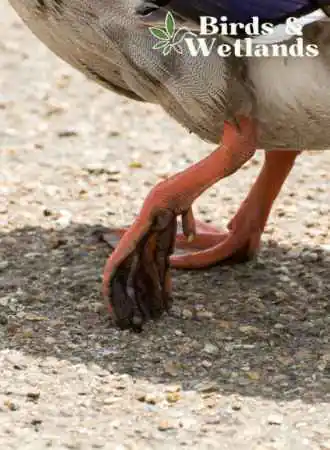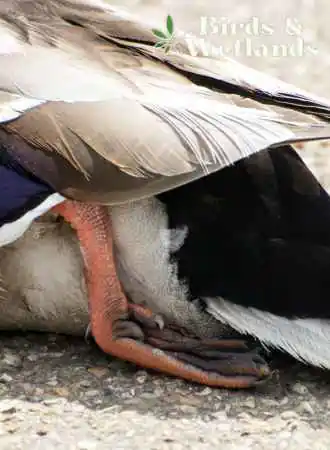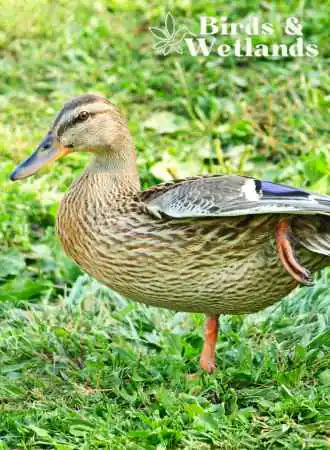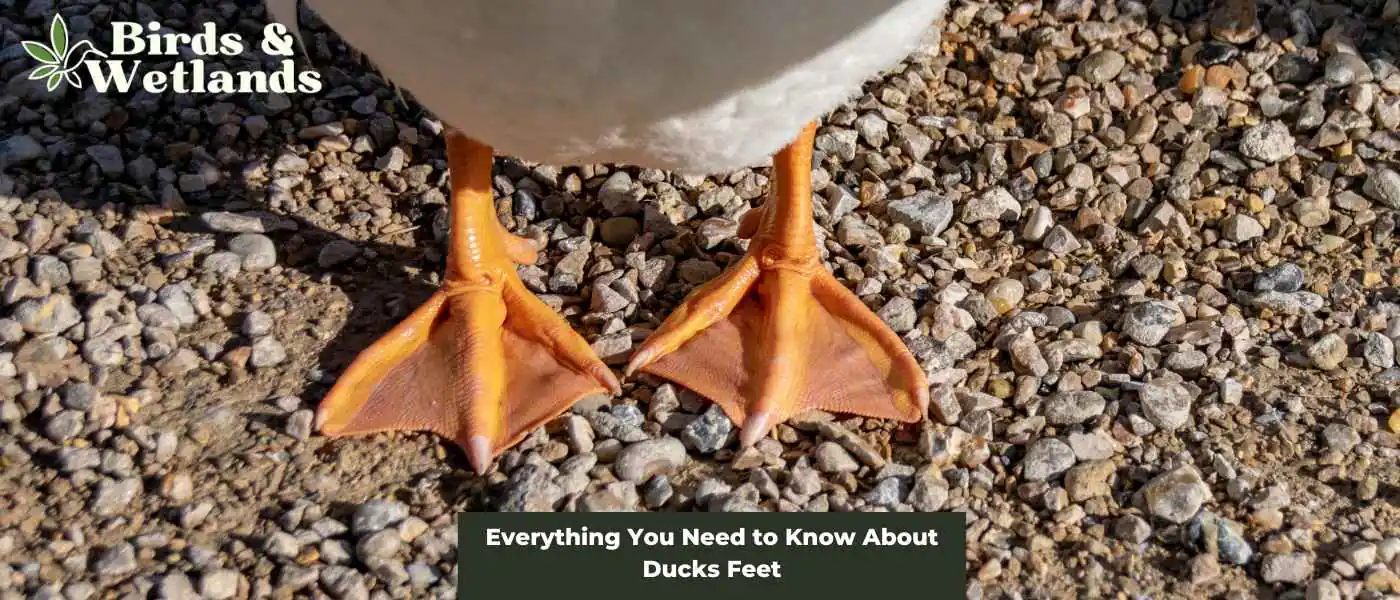Webbed feet are an important adaptation for ducks, allowing them to swim, float, and catch food efficiently. They also help ducks move quickly in water and maneuver easily, allowing them to catch prey, escape predators, and migrate.
Moreover, webbed feet help ducks stay buoyant in water, providing stability and aiding in thermoregulation. They also provide traction on slippery surfaces, allowing ducks to take off and land in the water.
In this blog post, we will dive deeper into ducks’ feet and the role they play in a duck’s survival.
What is a duck’s foot called?

Ducks’ feet are called webbed feet, and scientifically, they are called palmate. Geese also have palmate feet. The bottom of duck feet is covered in a thin membrane of skin, which forms a web-like pattern on the bottom of their feet.
The webbing helps to provide them with more propulsion when they swim and allows them to walk on soft surfaces such as mud or sand.
Ducks are aquatic birds that use their webbed feet to steer and propel themselves through the water, often using their feet to paddle. They can also use their webbed feet to help them walk on land, although they are not as adapted for this.
A portion of the leg called the tarsometatarsus is formed by the fusion of some of the lower bones of the foot.
Do ducks have feet or flippers?
Ducks have webbed feet, not flippers. This is an adaptation that helps them to swim on the water’s surface or under the water. Webbed feet are ideal for birds that swim. In fact, they’re such a nifty adaptation that they evolved independently in several bird groups.
What is special about a ducks feet?

Ducks are known for their remarkable versatility and adaptability both in water and on land, which can be seen in the anatomy of their feet. They have three toes pointing forward, and a back toe called hallux.
With webbed feet perfect for paddling more surface to push against the water in the river or lake, ducks can swim effortlessly in water. The webbing of a duck’s feet helps it to move with greater ease and control through the water, much like the fins of a fish.
But what truly sets a duck’s feet apart from most birds is their versatility on land. Unlike other water-dwelling birds, ducks can walk, run and even jump on the ground, thanks to their feet’ unique structure.
Ducks use their feet to swim and are uniquely designed to maintain regular body temperature during cold weather conditions. They don’t lose heat even if they stand on the a cold surface. Their arteries and veins are interconnected, and before the blood pumps into the ducks’ feet, heat is passed from the vein in the feet to the blood returning to the body. Moreover, their feet function like water skis or shock absorbers.
Ducks also have claws and special tendons in their feet that help to control the position of their toes. This allows these water birds to spread their toes wide and grip tightly onto objects, making them highly effective at catching and holding onto prey.
Interestingly, most ducks have orange feet while others have blue or dark gray feet. Some ducks feet even change colors during breeding season.
Why are the legs of diving ducks placed far back than those of dabbling ducks?

Ducks are a group of birds that belong to the family Anatidae. Within this family, there are two main groups of ducks – dabbling ducks and diving ducks. These two groups of ducks have different adaptations and behaviors that set them apart.
Ducks legs are set in different positions depending on how they forage. The legs of diving ducks are placed far back on their bodies compared to those of dabbling ducks.
Dabbling ducks are characterized by their ability to feed by tipping forward in shallow water, which allows them to reach underwater vegetation and other food sources.
As a result, their legs are positioned near the center of their body to provide balance and stability as they tip forward into the water. This placement also enables dabbling ducks to make quick, sudden movements and take off into the air easily when they sense danger.
On the other hand, a diving duck is designed for deep diving. It dives underwater to search for food in deeper waters where it can feed on mollusks, crustaceans, and fish.
To support their diving behavior and for maximum forward motion, diving ducks have legs positioned far back on their bodies and have more webbing on their feet. This placement allows them to generate the power they need to propel themselves underwater and dive to depths of up to 60 feet or more. To minimize water resistance, the toes are then pressed together on the forward stroke.
How do ducks walk?

Ducks usually walk with a waddling gait, as their legs are set farther back on their body than other birds. When they walk, they swing their bodies from side to side, which allows them to propel themselves forward. They also tend to move their feet in tandem, which gives them a characteristic rocking motion.
To achieve a better balance for walking, ducks that spend more time on land have their legs and feet more centrally located.
Ducks typically walk at a slow to moderate pace, with their heads held up, and frequently pause to rest or look around. When they are in a hurry, ducks may run with a bouncy, hopping gait.
Key Takeaways on Duck Feet
- Duck’s feet are a complex and intricate part of their anatomy, designed for swimming and walking on land.
- With webbed feet and specialized tendons, ducks are a testament to their adaptability and versatility.
- Different species of ducks use their feet similarly, for swimming, walking and flying.

